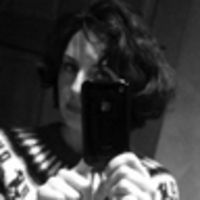LONDON — You might not expect that the images that form the mainstay of the Royal Academy of Art’s David Hockney: 82 Portraits and 1 Still-Life exhibition (to October 2, 2016) were painted in the British artist’s Los Angeles studio.
The technicolor portraits that hang in three rooms in the Academy’s Sackler Wing Galleries, are anything but LA.
By that, I mean they are anything but celebrity-oriented or atmospheric of LA.
ADVERTISEMENT
Instead, for this exhibition, Hockney chose to paint friends and family, as he has done in the past—like ‘Portrait of an Artist (Pool with Two Figures),’ one of the most famous artistic renderings of LA life and one of Hockney’s most famous pictures which he created in 1972.
Hockney, one of our great modern artists, was born in Britain in 1937. He studied at the Royal Academy of Art, amongst other schools. Considered a pop artist, his mediums span everything from I-Pad art to creating opera sets. He has often worked in the medium of portraiture.
“Celebrities are made for social media,” says Hockney, who created the portraits, in part, as a response to the proliferation of selfies in social media. “I don’t do celebrities, photography does celebrities. My friends are my celebrities.”
Not only would anyone be hard-pressed to tell you who most of his subjects are, there isn’t a celebrity—in the Hollywood definition of that word—among them.
The most famous include architect Frank Gehry (architect of the IAC building where the Daily Beast is housed among others), banker and arts philanthropist Jacob Rothschild, gallerist Larry Gagosian and Barry Humphries (most famous for playing Dame Edna Everage), who sits crumpled in pink trousers and a red tie.
Some of Hockney’s other better-known subjects—but only to those with a passing knowledge of contemporary art or textiles—are the artist John Baldessari, textile designer Celia Birtwell (who he has painted before), and publisher Benedikt Taschen.
Hockney set out to create what he calls 20-hour exposures, or portraits painted in three-day sittings. The artist wanted to reinstate the value of portraiture, he says, but perhaps with a nod to photography.
The bulk of the paintings were completed in the summer of 2013, after the artist returned from living in Yorkshire to Los Angeles, which he has called home, on and off, for over thirty years.
In a world of photo-shopping, laser skin treatments, permanent make-up and celebrity stylists, the portraits on show at the Royal Academy are delightfully frumpy and real.
Not one of them looks polished. His subjects sit in casual attire, often somewhat disheveled. (Of course, most people wander around Los Angeles looking just so, or decidedly shabby from a hike or trip to the farmer’s market.)
Hockney’s subjects sit slumping in their chairs, fat bulging, hair dye misapplied and, in the case of one of his sitters, cellulite all but showing on the bare legs.
Take Maurice Payne who sits with his hands bound together pensively, his blond hair sticking up skywards, his Doc Marten- clad feet pointing inwards, like an introverted school child, his belly rounded under a blue jean jacket.
Or Bing McGilvray who looks bashful in a pink, short-sleeved shirt, tucked over yellow shorts, his red socks worn with brown sandals. He looks like a gardener who has wandered indoors to find himself, unexpectedly, a muse for the afternoon.
Baldesarri sits face on, his brown slacks covering long limbs, a white shock of hair framing a stern face.
One of the paintings is of the exhibition’s curator Edith Devaney. She sits like a contorted cat, her hand supporting a worried-looking face, her outfit consisting of jeans and a striped top. She says she selected a casual outfit to contrast with some of the other female sitters who dressed up.
Sitters were allowed to select their own outfits and poses, Devaney says. Her portrait was first etched in charcoal, in a sitting that began at nine a.m. It was then completed in acrylic which the artist hasn’t worked in for some time.
“Working with Hockney on his 2012 Royal Academy show, gave me an opportunity to get to know him well,” she says. “Sitting for a portrait, however, revealed much more about his practice.”
Hockney’s other more innovative projects include painting Yosemite and his native Yorkshire on his I-Pad, and creating set designs infused with colors inspired by a condition he suffers from called synesthesia, which means that he sees particular colors when he hears music.
Color plays a big role in the portraits, too. There is the southern Californian light that infuses each work, like a spotlight detectable on the surface of each painting.
Each one has been painted with a muted green and blue background, each subject sitting on the same yellow chair.
No one is wearing their Sunday best.
To the naked eye, there is the sense that each one is tied into the traditions of modern art as practiced by Van Gogh and some of his contemporaries. This is detected in the sometimes hazy paint quality and the evocative light, but Hockney also deploys a vivid, brash Los Angeles dash of color.
Hockney says that his interest in portraits has to do with “deep sympathy for the individual and the fragilities we embody, or la comedie humaine.” He adds that he “paints what he sees.”
Devaney, who was the last to sit for him, put him to the test, and asked him if he thought he had captured her likeness?
“I’ve got an aspect of you,” he told her, adding, “The first portrait captured an aspect of you. If I were to do a third, it would be different again.”






